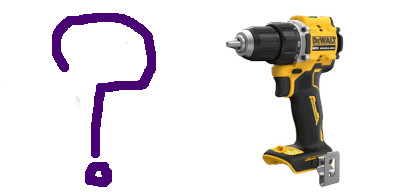How Do You Troubleshoot An Electric Drill?
Author: E. Silva (aka Mr. Awesome - The Niche Specialty Expert)

This is a great question I see on your mind ( since I’m psychic, remember? If you have read my other pages, I’ve joked on that before, heh eh heh he heh heh ) . Now, let’s talk. So, what are the problems you can encounter, then? And how can you go about with coming up with solutions for these? Well ….
First of all, the problem people face 40 % of the time with an electric – drill is that it simply will not turn on. When this is the case, there are certain parts you may want to look at. And based on expert opinion, you may need to re – place, re – adjust, etc. These parts are the armatures, the carbon brushes, the fields, the power cords, the switches, or the holder. Have a look at all of these ( keeping in mind some electric – drills may not have all these components, or they may be located in different areas of the drill, depending on the specific brand / model ) .
Something that happens another 30 % , according to most users and additional expert content on the subject, is that the electric – drill simply over – heats. I won’t get too much into detail here on that, since I do have another page that talks on this particular subject entirely ( please see my “How do you fix an over - heated drill?” post on this web – site when you get a minute ) . But what I will briefly say, on that note, is this —- when you over – heat, you need to un – plug, cool down for about 25 minutes, and then plug it back in somewhere nice and cool ( like a well – ventilated room with high – quality AC power turned on ) . And you need to check your temp gauge often and un – plug when it goes past its ideal temperature range.
Now, then, another issue that happens 30 % of the time, as experts claim, is that the electric – drill simply starts to spin ( yet the chuck itself does not, which is such a hassle and worries many users out ) . Here is what you can do about that, usually : Have a close look at the gears, spindles, and shafts. 9 times out of 10, the problem lies somewhere within these 3 areas. Now if you don’t know how to assess for yourself, or how to repair or swap out such a part, then it’s best that you either spend hours on YouTube vids learning ( with your own eyes, and following along each step closely ) how others do it, or you could hire a pro expert to take a close look. These guys can narrow down the precise problem for you. Or in the worst – case scenario, you could just toss the drill and buy a whole new one.
